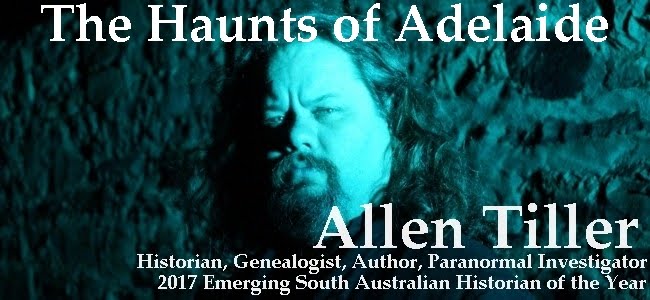Haunted Highercombe Hotel Museum
Every year I have the pleasure of visiting locations haunted
locations around Australia. 2015 was no different, with investigations at the
Boggo Road Gaol in Queensland, Geelong Gaol, Beechworth Lunatic Asylum in
Victoria and a return to Woodford Academy in New South Wales. In South
Australia, the journey has taken in Old Adelaide Gaol, The Cornucopia Hotel in
Wallaroo, investigations in Willunga, Kapunda, Gladstone and Edinburgh, but one
of the more interesting locations for me, this year has been a small scale
investigation in a historic location, the Highercombe Hotel Museum in Tea Tree
Gully.
In 1853 when the Highercombe Hotel was built in the town of
“Steventon”, now known as Tea Tree Gully. The population was of a reasonable
size, but not one big enough to support the Highercombe Hotel and the Tea Tree
Gully Inn which stood across the road. The Highercombe Hotel had a short-lived
existence as a local pub, closing its doors as a hotel only 24 years after
opening.
The Tea Tree Gully
Hotel became a major stopping point for stagecoaches and horse riders after
the main road in the area was diverted right past its front door.
The northern side of
the Highercombe Hotel building served as the local post office and post-masters
residence from 1879 until 1963. From 1875 until 1934 the southern side of the
building was lived in by the headteacher of the Tea Tree Gully Public School.
After this, for 20 years from 1930, the southern side was rented to the Hughes
family as a private residence.
For a small period in
the 1960s the building served as the library and office for the Tea Tre Gully
Council, until it was bequeathed to the National Trust in 1967 when it’s life
as a museum was imagined.
In 2015
the site has been renamed “The Tea Tree Gully Heritage Museum” and is run
entirely by volunteers
Whilst I have found no deaths in my current research on the building
that could lend credence to a possible haunting, the building contains a number
of personal effects that could promote the theory of “attachment”. “Attachment”
is the theory that some paranormal investigators subscribe too, that some
objects are so loved and adored by their owners or had such importance in
their lives, that, in death, they still cannot bear to part with the object.
This, in turn, leads to sightings of the spirit near its beloved object – as
would appear to be the case here in this building.
One sighting has been
of a young girl sitting in front of the fireplace in the large downstairs
sitting-room at the entrance side of the Hotel. This teenage girl has been seen
briefly by volunteers, sitting quietly, as if enjoying, or warming herself in
front of the fire.
Whilst investigating
with my team, Eidolon Paranormal, and friend Karina Eames, we had our own brief
unexplained experience in an upstairs room when reading poetry that was
bequeathed to the museum in an estate. Whilst Karina and Karen were reading the
poetry aloud, another investigator witnessed a small white light pass between
two investigators and then vanish – at the same time goosebumps and coldness
was felt by the investigators.
At this stage we are
still reviewing our investigation data, and looking towards further
investigations in the former hotel to uncover who could possibly be haunting
the building.
The museum can be visited by the public on open days or
through group bookings by visiting the volunteer society’s website at – http://www.highercombemuseum.on.net/
Allen Tiller is the Australian star of the
international hit television show “Haunting: Australia” and author of “The
Haunts of Adelaide – History, Mystery and the Paranormal” as well as being a
historian, lecturer, poet, musician, Tour Guide, blogger and podcaster. Allen
is also a volunteer for many different associations and groups.
You can find Allen online at:
www.twitter.com/Allen_Tiller
www.facebook.com/AllenHauntingAustralia
https://www.facebook.com/TheHauntsOfAdelaide
First published in MEGAscene issue 5 2016
© Allen Tiller







